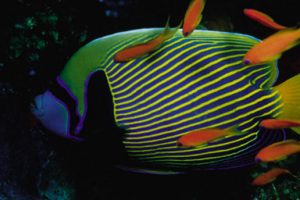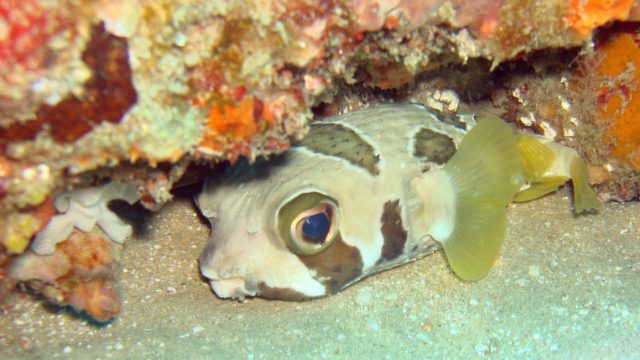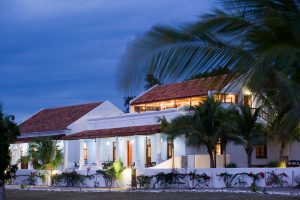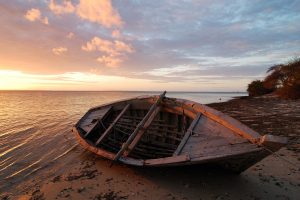After nearly a full year in Mozambique, I found myself beyond embarrassed that I had yet to slip below the surface of the Indian Ocean and explore what was reputed to be the country’s most stunning side. As I neared the northernmost part of my journey in Pemba, a town just south of the Quirimbas Archipelago, I finally found the confidence and funds to get my PADI certification.
Pemba was, at one point, a relative hub for diving in the north. Today, things are somewhat different. The recent discovery of natural gas offshore has led to a marked decline in the number of active dive shops, given the anticipated deterioration of the reefs. In August 2013, only Pieter Jacobs at Pieter’s Place/CI Divers was actively certifying divers – though the luxe and expensive Pemba Beach Resort showed signs of opening a dive shop as well.
In spite of his seemingly perpetual intention to wrap up operations, Pieter agreed to show me the ropes. With thousands of dives under his belt and a reputation for being the longest-residing expat in the city, I felt as though I was in good hands – or rather, fins.

Courtesy of Pemba Beach Resort
As it likely is for many, my first dive is one I will never forget. After descending to a sandy section of the ocean floor just off Pemba’s palm-fringed Wimbe Beach, Pieter and I swam alone into a world of captivating coral. Colours of violet, lavender, turquoise, teal, pink and cobalt surrounded me. Marine life was abundant, though on this first dive I stayed focused on the mechanics of diving and maintaining my breath, rather than species identification. My first 45 minutes under the surface passed in what felt like mere minutes. The dive ended at a massive boulder of brain coral with large schools of tropical fish swimming round and popping out. As we ascended, I was completely converted to diving and busily planned future dives worldwide.
On my third day, my boyfriend and my best friend – both of whom were divers with more experience worldwide – joined me. Together, we all headed out to The Gap: a dive on the edge of the 260-390 foot continental shelf. Beginning again in a sandy section at a depth of 33 feet, we slowly swam towards the edge of the wall. As coral replaced grass, starfish, lionfish and sea cucumbers sightings grew more frequent. The contrast of the abundant marine life with the vast empty ocean beyond the edge was dizzying, powerful and humbling. Massive gorgonian fans soared up beside me, as I gazed sporadically out into the abyss in hopes of spying a sign of the migrating humpback whales. As I returned my focus to my immediate surroundings, I found myself swimming around sea turtles as jellyfish hovered above me. Once more, an hour dive evaporated and we were surfacing again. As we sat in a small wooden boat chatting about our dive – on my birthday, I might add – we were delighted to look to the horizon to see two humpbacks breaching a few hundred feet from our boat. Our team of two experienced divers, Pieter and me concluded that this was certainly one of the planet’s more sensational dive locations.
Fully certified as a PADI Open Water diver, I left Pemba and sailed out to Ibo Island in the southernmost part of the Quirimbas Archipelago. Rumoured to be the best diving location in the country, we excitedly wandered over to Ibo Island Lodge to organize our next adventure. As the sole dive shop on the island, we were lucky to visit during a period where they were in operation. Return visits in the following months would reveal that this occurs only sporadically throughout the year depending on the availability of staff and equipment. Thankfully, we were introduced to the ever-charismatic Dive Master, Sergio, and together we made plans for a dive the following day.
After a few logistical bumps and glitches in the early morning, we finally set out towards The Lighthouse off the northern tip of the island for two dives. This site has a long wall covering a single square kilometer, with visibility that could make you swear you were in a well-kept aquarium. The dive began at 10 meters, as we swam through crystal waters towards the edge. Expansive gardens of coral tables, soft corals, bucket corals and green tree corals made this a pleasantly different environment than that off Wimbe. Swirling whip corals swayed between sponges, further adding an aura of enchantment to the experience. Large schools of clown fish, red-toothed trigger fish and Picasso fish were common, with the odd moray eel and blue-spotted stingray revealing their heads from their caves or sandy patches. Of course, highlights included a sighting of a small reef shark and a number of sea turtles gliding along the edge of the wall before disappearing ahead.
I returned to Ibo once more amazed by the vibrancy of this new underwater world. Keen to explore it further, we set off on another day to swim with a resident pod of dolphins and explore a shallow shipwreck with the aid of a snorkel and fins. While diving is possible at the wreck, the dramatic tides leave this 19th century coal steamer partially exposed during low tide, with a maximum depth of three meters. A snorkel seemed like a more economical option that permitted much more freedom to explore. Plus, the trip occurred on an ever-magical traditional dhow, complete with a single white sail that was hoisted at sunset.
Ibo Island Lodge was, towards the end of 2013, exploring the concept of running multi-day liveaboard trips to the more remote northern islands in the Quirimbas. It is in these northern islands that shark populations continue to thrive, and the diving remains even more untouched. This dream remains unrealized at the moment, though luxury lodges including the celebrity-filled and extremely luxurious Vamizi and Azura Quilalea do run dive trips to their local yet remote reefs.
The diving in Mozambique completely captured my heart and spirit, and I have since developed an extensive diving-related bucket list that extends well beyond eastern Africa’s Indian Ocean. That said, discussions with avid divers reveal quite confidently that perhaps never again will I find such pristine sights that remain so untouched by tourism. Given the rapid development of the recently discovered offshore gas deposits, this unspoiled underwater wonderland may exist for only a small amount of time.
As a final word of caution: it is worth noting that while Mozambique is famed for its impressive mega fauna, including whale sharks and giant manta rays, these species thrive only in the country’s southernmost shores. For those who crave encounters with these species, you will be far more satisfied diving near the towns of Tofo or Vilanculos.



